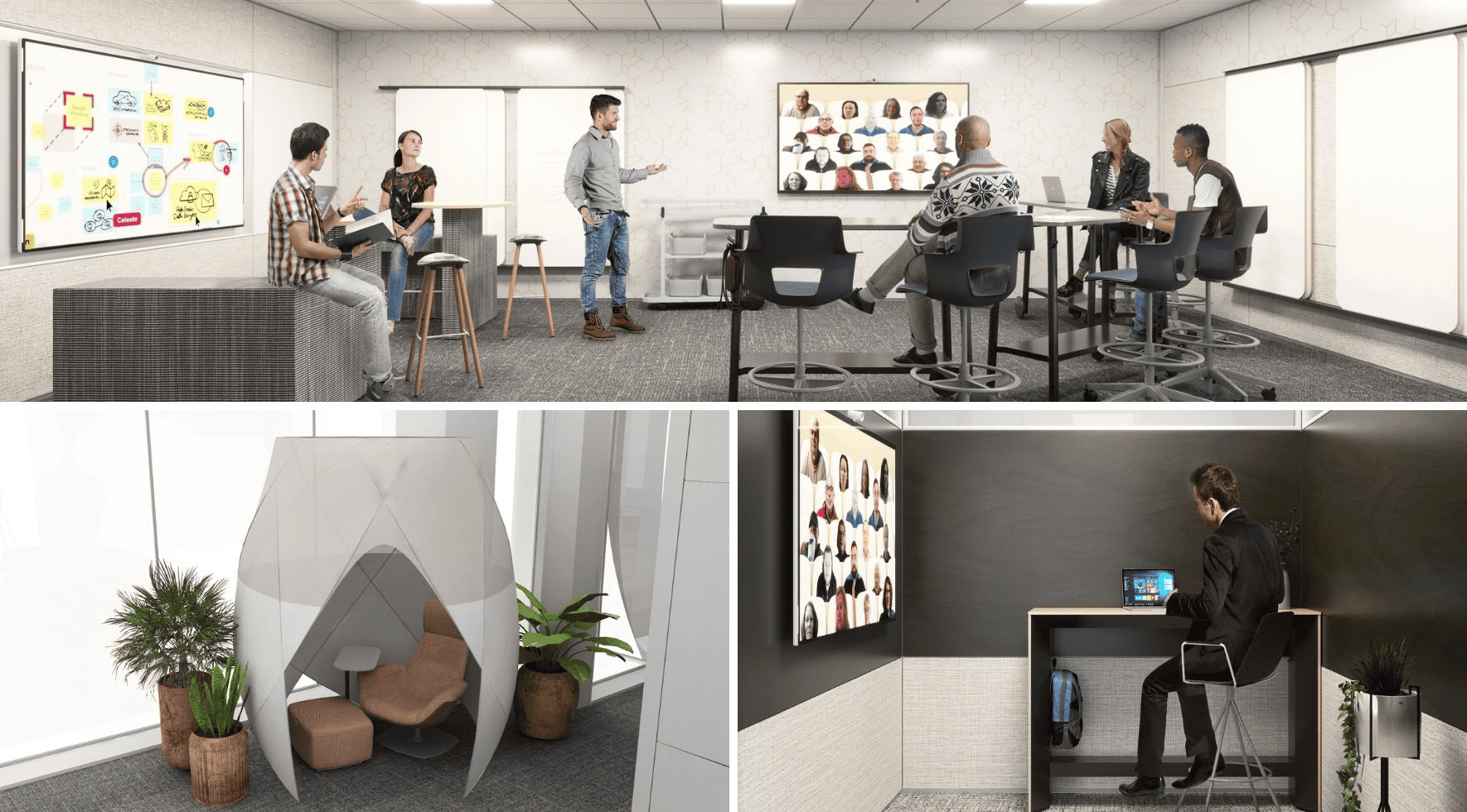Since COVID, most organizations have had to adapt to a hybrid work environment, which is a flexible and dynamic work arrangement that combines the benefits of traditional office work (face to face interaction, structure, routine etc) with the convenience of remote work. That means employees can work from an office, home, or some other remote area depending on what they want and their situation.

This unique arrangement allows employees to work in a way that suits their needs, preferences, and productivity styles, while providing a semblance of structure and support of the native work environment. But that’s not all the benefits of this new arrangement when all factors have been optimized. It also provides:
- Better work-life balance for employees, which in turn increases productivity and efficiency in the workplace
- Better talent attraction and retention while saving money on office space and utilities
However, hybrid work environments also present challenges, such as:
- It becomes difficult to build and maintain team cohesion and communication
- Clear boundaries and expectations become quite challenging to establish in the team
- Managing and monitoring productivity and performance may become Herculean a task
- Technical issues and connectivity problems
- Security and data privacy concerns
Yet there are more and more companies embracing hybrid workplace. The strategies below will help them overcome these challenges and reap the benefits of this unique work arrangement.
- RELATED: 5 Tips For Efficient Remote Working [2024]
- 16 Must-Have Software Or Apps For Remote Workers [2024] To Improve Productivity
Establish clear communication channels
Imagine a team with a fast approaching deadline but with zero channels for clear communication. Just a recipe for disaster as even the most talented teams can quickly descend into chaos with miscommunication and missed deadlines becoming their norm. (Each point below is actually a tip on its own)
- To avoid this, teams must establish clear communication channels that facilitate seamless exchange of information, active listening, and collaboration. For that, team leaders have to define communication protocols that outline the what, when, and how of a team communication. For example, emails could be for formal communication and turning in projects, phone calls for urgent matters, and collaboration software (like Asana) for discussions.
- Also suggest having regular virtual meetings. These virtual gatherings provide a platform for team members to connect and discuss their goals and objectives. Regular face-to-face interactions build personal connections and create a sense of community amongst team members.
- Utilizing collaboration software such as Slack, or Asana will speed up file sharing, task management, and real-time communication, which ensures the virtual workspace is accessible from anywhere.
- Setting email and phone protocols lets everyone know what to expect when using these channels. so there’s clear expectations for response time on both, and email etiquette. Implementing these protocols will create a culture of respect, and open communication.
- Part of making your team feel like a community through clear communication is active listening by every member. You can encourage team members to ask questions and seek feedback. That way, you build openness, trust and transparency in your team.
Set Boundaries and Expectations
Without clear statements of expectations and boundaries, employees could quite easily begin to struggle navigating the blurred lines between work and personal life. Here are a few tips to help you set this straight.
- Define your work hours and availability: Let the team know what time you’ll be available for a call, especially if there are different timezones in play. Think of it as your “clock in” hours. During that time, you’ll be available for response times, email, phone calls, and meeting schedules. By setting this boundary, you keep your work life from bleeding into your personal life.
- Establish clear goals and objectives: ensure your goals and objectives align with the organization’s overall mission. So whether it’s setting measurable targets or defining key performance indicators, setting clear goals will create a sense of purpose and direction to help you focus on what matters.
Miscellaneous Tips
Other tips that you’ll need to follow to build a successful hybrid work environment include:
- Provide the necessary devices, internet connectivity, and ergonomic furniture for comfortable and productive work for all team members.
- Provide access to online courses, webinars, or workshops that enhance skills and knowledge so employees can improve on the go.
- Working online means sharing sensitive data over the Internet. Providing robust security measures to protect sensitive data and maintain confidentiality is key.
- Provide access to mental health resources, wellness programs, or employee assistance programs to support team members’ overall well-being.
- RELATED: How To Work Properly At Home [2024]
- 6 Best Workplace Software [2024] To Optimize Productivity
I hope this tutorial helped you to know about “11 Tips for a Successful Hybrid Work Environment”. If you want to say anything, let us know through the comment sections. If you like this article, please share it and follow WhatVwant on Facebook, Twitter, and YouTube for more technical tips.
